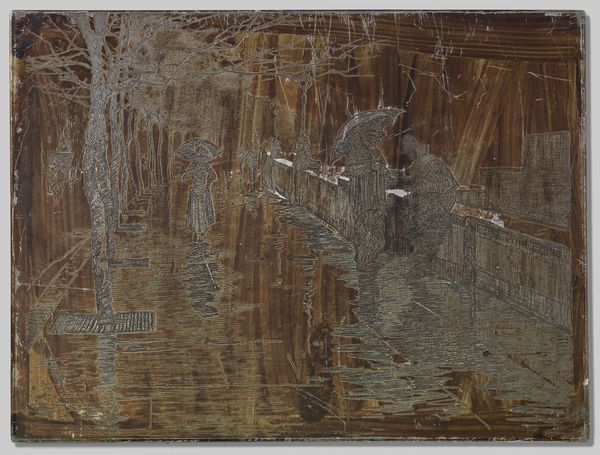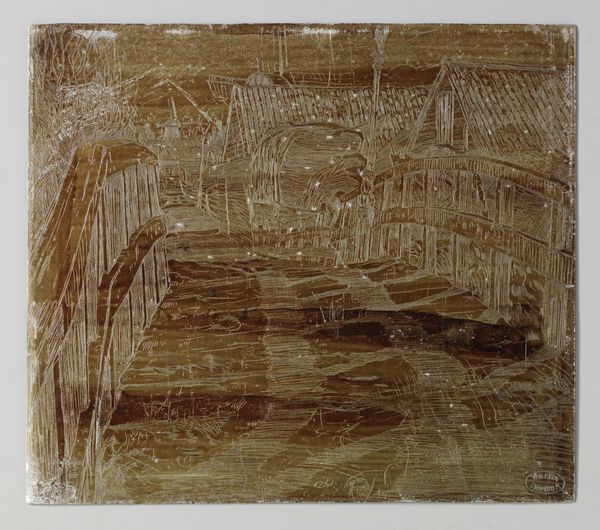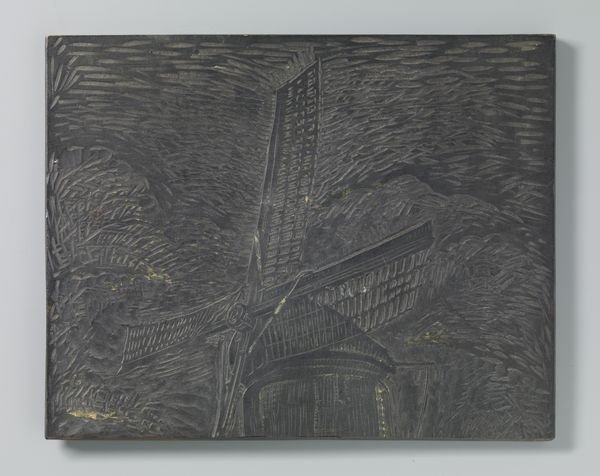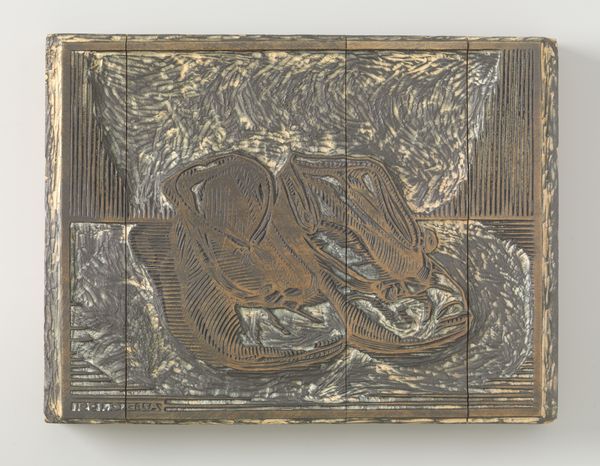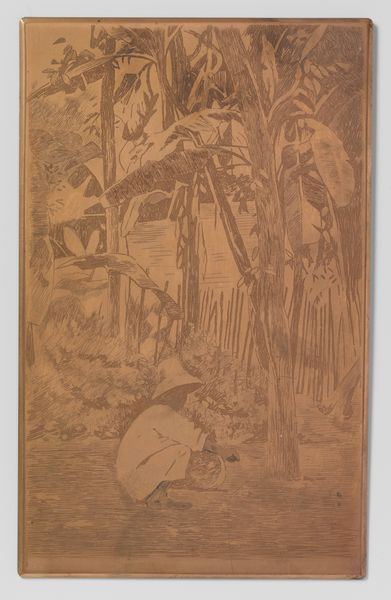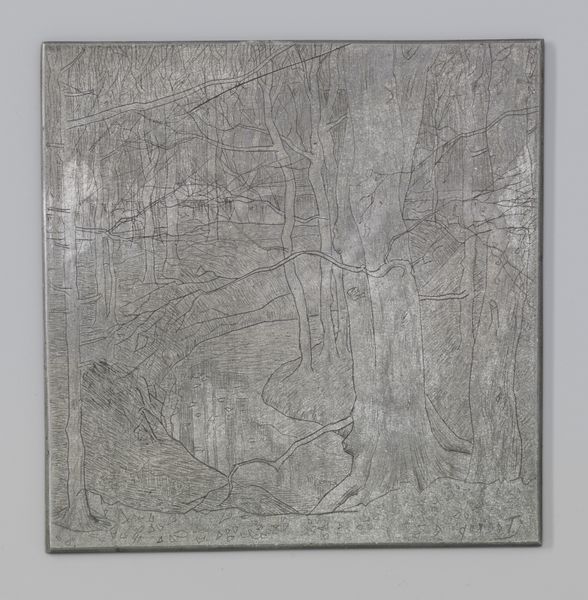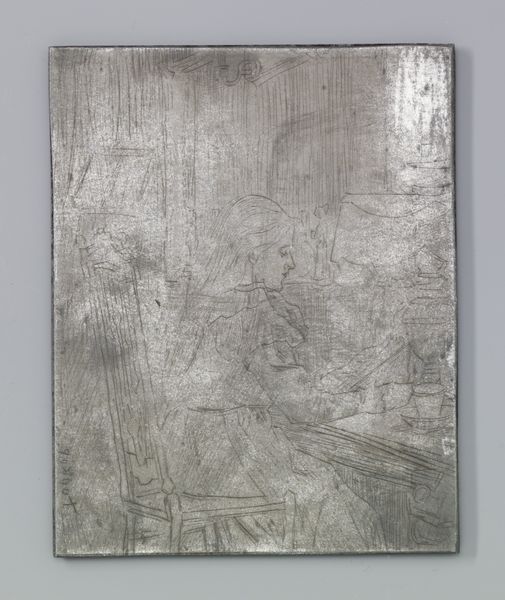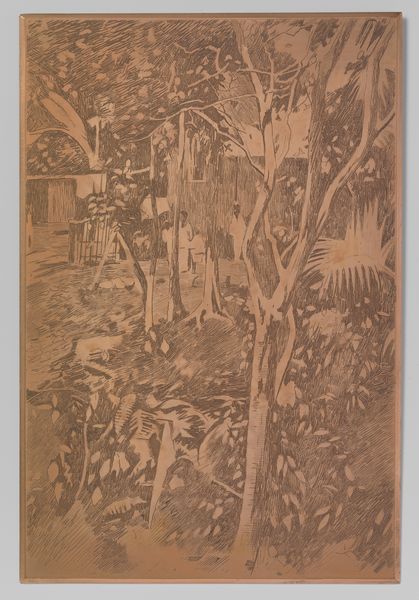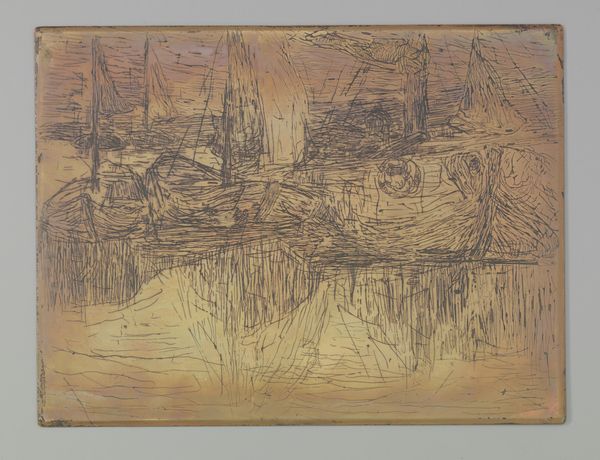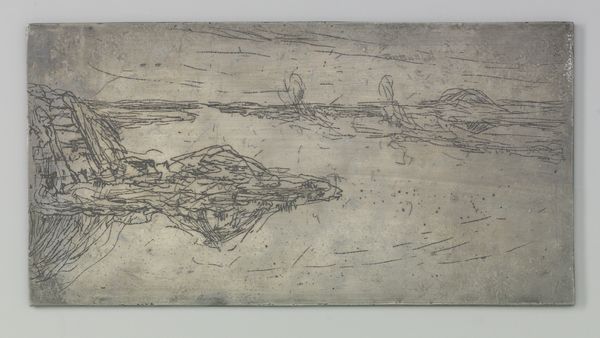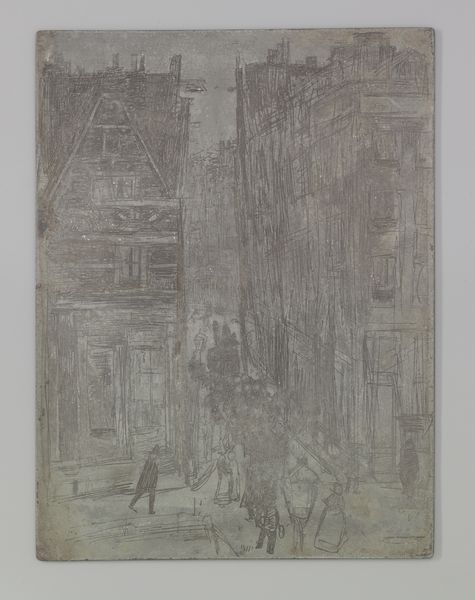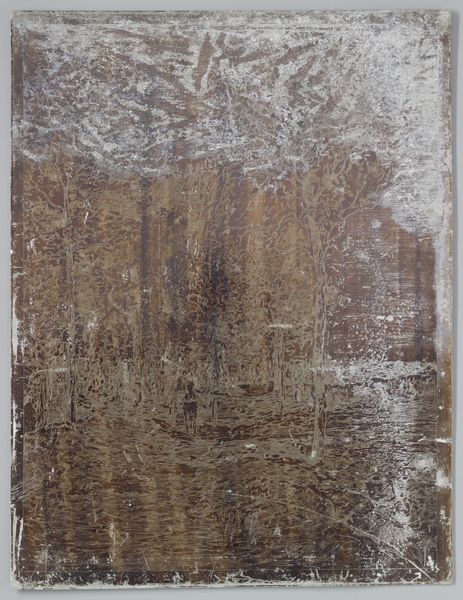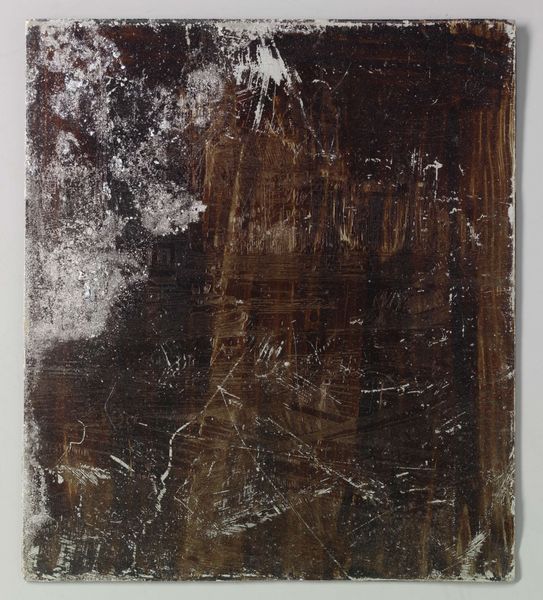
Dimensions: height 232 mm, width 150 mm
Copyright: Rijks Museum: Open Domain
Curator: Welcome. Today we're looking at "Four Trees by Houses," a woodblock print crafted in 1919 by Julie de Graag. It's currently part of the Rijksmuseum's collection. Editor: It strikes me as remarkably textural. The monochromatic palette enhances the carved feel of the print; it seems both delicate and rugged. Curator: Indeed. De Graag’s approach to woodblock printing reflects the influences of Impressionism. Notice the emphasis on capturing the fleeting impressions of light and atmosphere. However, what makes her work distinct is how she combined these elements with an exploration of modernist aesthetics. Editor: The image itself feels deceptively simple. A rural landscape reduced to its essence: bare trees, simple dwellings. But there's a complexity too; an underlying statement. The sparseness resonates in post-WWI Europe—a sense of recovery and resilience within the everyday. Do you see any potential link between these prints and the wider movement of women artists gaining traction? Curator: Absolutely. De Graag exhibited extensively and was actively involved in the Dutch art scene. Looking closely, we see her work provides an interesting insight into gendered views of nature and landscape. At the time, landscape was considered less hierarchical and was accepted as a suitable subject for female artists, challenging the social constructs surrounding art and artists at the beginning of the 20th century. Editor: It’s fascinating how a seemingly serene landscape holds such depth. By understanding its place within art history and wider socio-political and gender dynamics, we can understand and discuss new and previously unrecognized features of the work. Curator: I agree. Considering how "Four Trees by Houses" reflects societal changes, artistic expression, and even the nuanced roles available to female artists back then offers a more comprehensive interpretation, enriching our understanding. Editor: In conclusion, "Four Trees by Houses" offers an excellent opportunity to reevaluate artistic production while questioning normative perspectives within visual culture. Curator: Thank you for providing your insight. Together, hopefully, we've helped illuminate not only the artwork itself, but also the intricate web of historical influences surrounding its creation and the ongoing questions surrounding its interpretation.
Comments
No comments
Be the first to comment and join the conversation on the ultimate creative platform.
